#paracelsianism
Explore tagged Tumblr posts
Text

Undine Gossip
Long time no post! It’s a simple fantasy piece, mostly inspired by how boring I think it is when people just depict Paracelsian elementals as technicolor little sexy ladies. Why can’t an undine be a weird little catfish, damn it? I think she’s cute this way!
38 notes
·
View notes
Text

1 note
·
View note
Text
O_O
In a Wikipedia article: "The term gas in chemistry was coined by Dutch chemist Jan Baptist van Helmont in the 17th century directly based on the Paracelsian notion of chaos. The g in gas is due to the Dutch pronunciation of this letter as a spirant, also employed to pronounce Greek χ.[50]"
Checking on Online Etymology Dictionary:
gas (n.1)
1650s, from Dutch gas, probably from Greek khaos "empty space" (see chaos). The sound of Dutch "g" is roughly equivalent to that of Greek "kh." First used by Flemish chemist J.B. van Helmont (1577-1644), probably influenced by Paracelsus, who used khaos in an occult sense of "proper elements of spirits" or "ultra-rarified water," which was van Helmont's definition of gas.
Hunc spiritum, incognitum hactenus, novo nomine gas voco ("This vapor, hitherto unknown, I call by a new name, 'gas.'") [Helmont, Ortus Medicinae]
Modern scientific sense began 1779, with later secondary specialization to "combustible mix of vapors" (1794, originally coal gas); "anesthetic" (1894, originally nitrous oxide); and "poison gas" (1900). Meaning "intestinal vapors" is from 1882. "The success of this artificial word is unique" [Weekley]. Slang sense of "empty talk" is from 1847; slang meaning "something exciting or excellent" first attested 1953, from earlier hepster slang gasser in the same sense (1944). Gas also meant "fun, a joke" in Anglo-Irish and was used so by Joyce (1914). Gas-works is by 1817. Gas-oven is from 1851 as a kitchen appliance; gas-stove from 1848.
49 notes
·
View notes
Text

"The psychologist Carl Gustav Jung makes the figure of Melusina correspond to his concept of the Soul. In the Clavis Artis tables, the serpent-woman appears to play the role of soul mediator between the body and the spirit, and for this reason she is also identifiable, in alchemical language, as a mercurial serpent, the principle from which the three basic substances of the Paracelsian alchemy: sulphur, mercury and salt." https://it.wikipedia.org/wiki/Clavis_Artis
22 notes
·
View notes
Text
A.B.A's chains-A Guilty Gear analysis
I heard that in the spanish version A.B.A's title of "lovingly latched on homunculus" is translated as "homúnculo encadenado por el amor "(homunculus chained by love) which aside from being a fair translation serves to highlight A.B.A's recurring chain motif, either of real or metaphorical chains.
Out of the way, of course, we have Paracelsus's old chain though of course that's more a motif to him and his story! But in a lesser way you could argue its hers too as it is she who holds the chain.
And of course we have to mention her arcade mode quote of (from memory, sorry for innacuracies) "the shackles of affection are still shackles" which, yes! This is too related moreso to Paracelsus! but its her realization. And a pivotal scene for both.
Lastly, this is more my speculation but you know the gg Isuka xbox cover where her gloves say "Alice"? Part of me wants to believe it's an Alice in Chains reference because.. you know. Guilty Gear.
Whatever, this all plus the hypocrisy she has exhibited about Frasco and Paracelsus make for a really interesting leitmotif. Not as big as the key, frankenstein or even blood ones, but a subtle, present one, imo. A chain motif. Both as the chainer and the chained.
I say hypocrisy because well, she saw Frasco/Flask as her trap (fun fact, the name is prob a reference to Paracelsian lore of homunculi having to spend their early stages in a flask or else they'd die) and she desperatedly wanted freedom, she knows so well how is it to lack autonomy but when she obsessed over Paracelsus she was doing that to him. Hell, while the XX endings aren't canon afaik, we see her bad ending. Just like how other characters in the game make a heel turn or die (I'm oversimplyfying it but you get it) the ending where she keeps human Paracelsus chained (that one ending is... Something) even more crassly than before. She's not the victim here, it's him, but if we follow the metaphorical chaining thing then she has also chained herself very strongly.
As we see in Strive, either always or at some point she realized her doings were wrong... Yet kept on doing them. She's indeed chained to (her unhealthy idea of) love (and her other obsessive mindsets).
Of course, Paracelsus is not innocent, either. This is an A.B.A centric post but of course I have to mention him!! As we see in Strive and, regardless if it was due to his demon nature or simply willingly being a bad guy he was also metaphorically chained before knowing A.B.A... chained to his thirst of destruction and recklessness. And we know he tried to manipulate A.B.A even if he fails and starts to legitimately care about her.
Both of them are chained. Chained not as a good term but as a detrimental one. Chained to eachother, yes, but also to themselves, to their own chains, shackles of obsessions. With A.B.A especially, we know for sure she has managed to escape previous chainings but she keeps getting into them. And that's scary, almost.
But this is Guilty Gear and there's hope and freedom (ha.) so Strive has this beautiful conclusion (or rather new beginning!) to their story, and, while we have seen Paracelsus improve before, maybe A.B.A's won't be linear. But she legitimately, against all odds, WANTS the situation to be better, and both have gotten a better understanding of the other and like Paracelsus said, they can make it right, now. Now what they have with eachother is less chaining and more bonding and dissolving of a healthier kind as partners, be it as lovers, friends or whatever.
The chains are broken now, it's a new beginning.
#a.b.a#paracelsus#guilty gear#guilty gear strive#guilty gear spoilers#long post#I DON'T KNOW WHY I TYPED OUT A WHOLE little ESSAY.#text tag2b named#a.b.a's such an interesting character. paracelsus too but her hypocrisy with chains gets me. I'm glad she's in strive
86 notes
·
View notes
Note
From the review in Bloody Disgusting that talks about how Ellen Hutter in Nosferatu 2024is a much more feminist heroine than Mina Harker (title of the article: How ‘Nosferatu’ Became a Feminist Retelling of a Horror Classic)
Revealed to be an ancient vampire, Dracula follows Mina to the seaside town of Whitby and begins transforming Lucy into a creature of the night. While she does have some agency, Mina’s life revolves around caring for others. A former teacher’s assistant, the idealistic young woman has given up her own career and learned to type with plans of serving as secretary for her husband’s ambitions. Stoker’s Mina is a traditional woman of the time, valued for her purity and content to dedicate her time and energy to her husband.
wow ok i found this so annoying i went to skim the piece to make sure there wasn’t some added context that would mitigate it (certainly you can to some degree read mina this way…. at the start of the book…..) and ummmmm:
A work of post-Enlightenment fiction, Dracula features a male fixation with innovation and technology. As Lucy’s life hangs in the balance, a doctor named Abraham Van Helsing arrives to perform a dazzling blood transfusion designed to save her from the undead curse. This academic warrior has become known throughout the literary world as a vampire hunter skilled at using new technology to battle centuries-old folklore. Murnau’s variant is Professor Bulwer (John Gottowt), a Swiss Paracelsian who specializes in parasitic plants and demonstrates the predatory nature of phantom-like organisms. Both credentialled men take charge of the paranormal mission and use scientific knowledge to defeat an occult figure, dismissing ancient traditions as regressive barbarism.
this is literally not true of stoker’s van helsing lol…. it’s like a whole Thing where he has to explain to seward “yah i’m a man of science but also i believe all this woowoo shit it’s complicated”……. also sorry but it’s actually crazy to be like “nosferatu 2024 is feminist bc ellen activates her inchoate atavistic wisdom of the ages in the face of rational thought” when actually one of the most annoying things about the movie is that it sets up the rationalism/atavism dichotomy and then positions female power wholly within the realm of the atavistic & primal (but still male approved bc she needs van helsing to tell her she’s right and also that she would have been a great high priestess of isis lol?????)…. which is not a trope i love and not one i would call feminist especially given that whatever critique the movie is trying to make of post enlightenment scientific practices is diluted by having van helsing be Guy Who Gets It all over the place… i was actually just talking with @awildwickedslip about how nosferatu 2024 van helsing (i literally don’t remember if he has a different name sorry) is positioned as more confident & flawless than book van helsing (contrast 24 van helsing’s sure-footed indignation about psychiatric treatments that read as barbaric to the modern eye with van helsing expressing in the book that if it were up to him he would have let renfield go so good thing seward is here who is an expert on psychiatry - a decision seward himself second guesses immediately after and which of course has disastrous results…)… i mean what are we doing here lol. i would never call dracula a feminist book but that just makes it wild that eggers found new ways to insert being annoying about gender in the year 2024 and it makes it really crazy to act like this is some profound feminist reinvention. lol. anyway i got so distracted about all this other stuff i forgot to say what immediately pinged me which is that this is one of the more annoying misuses i’ve seen of the relationship between agency and feminist readings of fictional works since i saw someone say jupiter ascending couldn’t be feminist bc the heroine has agency taken from her at every turn
#askbox#also the blood transfusions…. i mean they do save lucy but then they don’t#bc… van helsing is using Ancient Wisdom re garlic and not cluing anyone in as to why….#(for understandable reasons don’t @ me but)
13 notes
·
View notes
Note
for the character request thingy, i've been thinking of gnome!ignacio, elf!gregor, and tiefling!moloch in your dunmeshi au,,,, unless u have other plans for them? 👀

ignacio as a gnome is definitely a like in our eyes!!!
i think, like how gnomes use spirits as their weapons, ignacio would absolutely use fire spirits (like a fire undine... which i guess would be called salamanders in paracelsian lore???).
as for gregor... we're kinda actually split on elf or tall-man !!!
elf gregor makes sense because elves have a higher magical energy, and i think elves are most familiar with demons
tall-man gregor also makes sense because tall-men can learn the gnome magic system which is more religious aligned (seeing spirits as sacred)...
it's a whatever situation rn heh
i know that tieflings are from dungeons and dragons but since they don't exist in dungeon meshi specifically, i'm not too sure about it!!
while i WOULD be interested in seeing a tiefling moloch, i have a certain idea for him :D saving this for another ask
#anyways elf young gregor SCARES ME HELPPPP GIVE THAT MAN BACK HIS WRINKES#[ the askbox mourns ]#[ the art of mourning ]#[ spooky dungeon au ]#spooky month#spooky month fanart#spooky month ignacio#spooky month father gregor
38 notes
·
View notes
Text










Between 1617 and 1621, the English polymath Robert Fludd unveiled his magnum opus, "Utriusque Cosmi… Historia," a two-volume work featuring over sixty intricate engravings. These volumes delved into the macrocosm of the universe and the spiritual realm. Fludd, a respected physician in the court of King James I, explored a vast array of topics, from alchemy and astrology to theology, melding practical knowledge with esoteric wisdom.
Fludd's masterpiece, "Utriusque Cosmi," dissected the Microcosm of human life and the Macrocosm of the universe, incorporating the spiritual domain. A staunch Anglican, Fludd blended Paracelsian chemical theories with theological insights. His lavishly illustrated cosmology depicted the universe's creation through divine alchemy.
A devoted follower of Paracelsus, Fludd's medical theories emphasized the celestial forces of light, attributing vital importance to the aerial nitre or quintessence. His medicinal incantations invoked the Hebrew name of Jesus, equating Christ with the kabbalistic angel Metatron.
Fludd's treatises featured extraordinary engravings, revealing his visionary approach. These intricate images, designed by Fludd himself, showcased his influence on contemporaneous occultists. His concepts of light's creative and healing forces were illustrated through diagrams, depicting the balance of spirit and matter, male and female, sulphur and mercury.
While I present only select fragments from this extensive work, it showcases Fludd's profound impact on alchemy, medicine, and mysticism. The imagery provides a glimpse into the visionary mind of this 17th-century polymath, influencing subsequent occultists like Michael Maier and Jacob Boehme.
#art#collage#digital art#illustration#symbols#music#vintage#books & libraries#books#artists on tumblr#antique
45 notes
·
View notes
Text

#protomechanoid#compilation#paracelsian records#post nuclear#ambient#dark ambient#electronic#Bandcamp
1 note
·
View note
Note
hello! ive seen you talk about astrology a few times and i was wondering if you had any books or article that historicise the practice. most of what i can find is very vague, and starting off from a 20th century definition (¬ v critical). i'm interested in any period, im just trying to start to get a sense of its different uses & epistemological frameworks. thank you your bibliography work on here is very precious :)
ok there's a lot of writing on astrology so this is not comprehensive by any means. u should also keep in mind that historically (painting in broad strokes here) astrology and astronomy were not entirely distinct practices, both because the point of astronomical observations was often to make astrological predictions, and because most people practicing astrology were expected to at least present themselves as having the instruments and savoir-faire to generate their own astronomical data. the non-astronomer astrologer is kind of a special case. so, astrology will pop up in lots of texts about historical astronomy and cosmology, even if that's not the primary focus. i would honestly usually recommend such texts over ones that try to tackle astrology under the broader schema of 'occult sciences' (contested category).
misc astrology until 1800
"how to accurately account for astrology's marginalization in the history of science and culture: the central importance of an interpretive framework" by h darrell rutkin (early science and medicine 23: 3, 217–243. 10.1163/15733823-00233P02)
the interactions of ancient astral science, by david brown & jonathan ben-dov
sapentia astrologica: astrology, magic and natural knowledge, ca. 1250–1800, by h darrel rutkin
reading the human body: physiognomics and astrology in the dead sea scrolls and hellenistic–early roman period judaism, by mladen popović
"the effect of astrological opinions on society: a preliminary view" by s mohammad mozaffari (trames 16: 4, 359–368. 10.3176/tr.2012.4.04)
in the path of the moon: babylonian celestial divination and its legacy, by francesca rochberg
astronomy and astrology in al-andalus and the maghrib, by julio samsó
ptolemy's science of stars in the middle ages, ed. david juste, benno van dalen, dag nikolaus hasse, & charles burnett
the millennial sovereign: sacred kingship and sainthood in islam, by a azfar moin
astronomy and reformation, by robin bruce barnes
the limits of influence: pico, louvain, and the crisis of renaissance astrology, by steven van den broecke
medical astrology
popular print and popular medicine: almanacs and health advice in early america, by thomas a horrocks
astro-medicine: astrology and medicine, east and west, ed. anna akasoy, charles burnett, & ronit yoeli-tlalim
english almanacs, astrology, and popular medicine, 1550–1700, by louise h curth
"medicine and divination in india" by michio yano (east asian science, technology, and medicine 24, 44–61. jstor.org/stable/43151240)
health and healing from the medieval garden, ed. peter dendle & alain touwaide
paracelsian moments: science, medicine, and astrology in early modern europe, ed. gerhild scholz williams & charles d gunnoe, jr
national and cross-national contexts
chinese astrology and astronomy: an outside history, by xiaoyuan jiang, tr. chen wenan
the duke and the stars: astrology and politics in renaissance milan, by monica azzolini
taming the prophets: astrology, orthodoxy, and the world of god in early modern sweden, by martin kjellgren
"garga and early astral science in india" by marko geslani, bill m mak, michio yano, & kenneth g zysk (history of science in south asia 5: 1, 151–191. 10.18732/H2ND44)
"when missionary astronomy encountered chinese astrology: johann adam schall von bell and chinese calendar reform in the seventeenth century" by liyuan liu (physics in perspective 22: 2, 110–126. 10.1007/s00016-020-00255-z)
38 notes
·
View notes
Text
Pop culture VS folklore : Elementals
Elementals are a popular type of fantasy creature related, as their name suggests, to the elements. But how does their modern depiction compare to their centuries-old version ?
Elementals, made from the elements

Ah, elementals, a timeless classic... They're these big creatures whose body is made of some element like water, fire, air or earth, right ?
Well, in DnD, yes. In folklore... Not so much (the Jain Ekendriya might be close, but it's still not quite the same thing...).
So, where did that idea come from ? The DnD creators took some inspiration from the works of Michael Moorcock in the 70s, like Elric of Melniboné. Moorcock, one of the biggest names in fantasy at the time, probably got it in turn from the writings of Paracelsus, an important 16th century alchemist — or at least something derived from the Paracelsian tradition.
Elementals, from Paracelsus (or are they...?)

The four Paracelsian elementals are also a fairly popular theme in fantasy or esoteric circles now, so you might be familiar with them already. You know, the Gnomes and their silly red hats for earth, the winged Sylphs for air, the liquid Undines for water, and the reptilian Salamanders for fire... Feels familiar ?
...Except everything I just listed about them, apart from the names, is 100% wrong.
These descriptions, while popular, are erroneous and do not match what Paracelsus wrote at all. In fact, you shouldn't trust any book or source genuinely claiming that elementals like that are what Paracelsus was talking about, because it shows that they just... Never double-checked.
Then again, to be fair, the Paracelsian concept of elementals has been reused and distorted by people for centuries now, so it's not exactly a modern pop culture issue. But still, let's set the record straight : what did the man actually write about these creatures back in the 1500s ?
Elementals, from Paracelsus (for real this time)
Their names
First, elementals aren't even called "elementals" by Paracelsus. At some point, he calls them the Saganae (sometimes rendered as "Sagani", and maybe coming from the Latin saga or sagana, meaning "witch") but that word never really caught on.
He otherwise mostly describes them in vague terms like "the water-people", "the mountain-people", and so on. Over the years, he gave the elementals various names, sometimes even randomly switching in the same text (Undines being however consistently referred to as "Nymphs"). The terms we now use for them come from the two alternative sets of names Paracelsus lists in his Liber de nymphis :
One based on what folk were apparently calling them, which he personally found inaccurate (Nymphs, Sylphs, Pygmies, Salamanders)
Another, which he found more fitting (Undines, Sylvestres, Gnomes, Vulcans)
Some of these come from previous legends or mythology (Ancient Greek Pygmies and nymphs, Roman god Vulcan, legends about the mythical salamander...). It does not necessarily mean that the elementals are the very same creatures featured in these legends (the Salamanders are very different from the magic lizard, but since both are said to live inside fire, a parallel between the two is made).
Others names, like "gnome", "undine" or "sylph", seem to have been coined by Paracelsus specifically for the elementals.
Those poor Sylphs...
The Sylphs might be the most mischaracterized of the four elementals. In fact, you can directly tell if someone has done any research on the subject by what they say about them : just searching the meaning of the word "sylph" would raise questions, as one would find that it comes from sylvestris, directly referring to the forest. Which doesn't make any sense, right ? Why the forest reference, if they are air elementals ?
Because they're not actually made of air or living in the sky. They're wild-men from the forest. If you hear anything about wings, clouds, abodes in the sky, or anything... You have left Paracelsian Sylph territory.
(But that's not even all : the words "sylph" and "sylphid" have now come to mean something ethereal, lithe and graceful... While the actual Sylphs are described are the total opposite...)
The 4 elemental chaos
To understand why air elementals would be forest people, you first need to understand the concept of chaos. The elementals aren't made of one of the 4 elements. They're creatures whose chaos is one of the 4 elements.
"Chaos" is, etymology-wise, the root of the word "gas". In this context, it's somewhat similar : as humans, our chaos is air, because we breathe air, and we move in air. The chaos of a fish is water, because it breathes and moves in water.
Elementals live inside their respective element, which is their chaos. They are able to move through it (gnomes can pass through stone for example), and aren't fit to survive in other chaos. Sylphs are, like humans, beings who breathe air and live in the air element.
(And in a way, it still makes sense, as forests do produce a big chunk of our oxygen...)
The elemental body
Although often mistaken for demons or ghosts, the elementals are regular beings of flesh and blood, not some kind of spirit, demon or mindless artificial being. They're born, they marry, have offspring and die, they eat, drink, sleep, poop, get sick. Each individual has their own personality, they are fully sentient and not particularly prone to evil.
However, unlike humans, their kind are not descendants of Adam (whose flesh was made from tangible earth), so their body is more subtle than ours. They're somewhat halfway between spirit and human, yet despite how humanlike they look, they lack an immortal soul (as opposed to humans).
The thicker the chaos, the more subtle the body of the species, and vice versa (so gnomes living in stone have a very subtle body, unlike humans who live in air and have a gross, tangible body).
How the elementals live
The elementals really aren't that different from us. They have their cultures, societies and rulers inside their own chaos. They have their own clothing and modesty taboos, although it doesn't necessarily line up with human ones.
They also have their own food and drink, which, while being their chaos' equivalent to our human foods and drinks, look different (except for Sylphs, who eat the plants of the forest like humans in the wilderness would). These foods and drinks are made of a special matter from the chaos that we can't see or comprehend. Each chaos has its own "soil" (usually earth, except for Gnomes, since to them, earth is like the air : instead, their soil is water), and the elementals grow their food from that soil and their element. They also have domestic animals, adapted to live in their chaos.
Since they can see through their chaos like we do in air, the elementals can all see the sun, the moon and the stars above them, just like us. They have days and nights, summers and winters like us, but their weather is slightly different, as it doesn't rain or snow inside the other chaos the same way as here.
Marriage and children
Elementals don't generally interact with the other three elemental peoples, but some of them can marry and have children with humans (which usually happens with female Undines). The children will be human, inheriting a soul from Adam through their human father. The Undine mother will also gain a soul in the process, and with it, access to the afterlife.
Paracelsus mentions that — not clarifying whether it's about the Undines only or about all elementals, but we can assume that it's about the water-people — they have a lot more females than males, which are very rare, and that this is why they actively seek human males. He mentions groups of Nymphs gathering together and constructing a place in the chaos of humans, the Venusberg, a cave where they wait for men. Their leader, the most beautiful, is the "Venus". While eternally young and very long-lived, that Venus will eventually die and be replaced by another Venus.
Each elemental kind has both males and females, so they can reproduce among themselves. However, it will produce monstrous offspring from a new race, bearing no resemblance to the parents, and also devoid of a soul. Among these monsters are sirens, giants and dwarves.
How could elementals still exist, then, if they're mortal and create other races when they attempt to reproduce ?
In his Astronomia Magna, Paracelsus writes that the elementals are actually born from nature itself : their father is the firmament — the sky and the stars within it, and their mother is their own element — fire, water, earth or air.

Undines / Nymphs 💧
Not literally made of water or a mermaid.
Look exactly like humans, and dress and behave like them
Live in rivers, they can interact with humans when they come near the water
Can speak the human language
Their unions produce different creatures, like mermaids or sea monks
Females often marry humans and have children with them, gaining a soul. If their human husband offends them near water, they disappear in it. But if the husband marries another wife, the Undine comes back and kills him
Sylphs / Sylvestres 🍃
Actually woodland beings living in forests and not any type of winged creature or spirit made of air or living in the clouds.
Humanoid. Taller, stronger and coarser than humans, but more shy
Live in forests, eat the plants of the forest
Cannot speak the human language but can understand it
Their unions produce different creatures, like giants
Sometimes marry humans, but this is way rarer than Undine/human marriages
Gnomes / Pygmies 🪨
Not the same as the garden gnomes with red hats despite sharing a name.
Humanoid, smaller than humans (about half their height)
Live in mountains, in caves and in mines
Can speak human languages, like Undines
Can see through stone and pass through it
Have a lot of money, since they have the ability to create money as they wish
Their unions produce different creatures, like dwarves
Very rarely marry humans, but often agree to serve them (as long as the human keeps their word and treats them well). Give humans money. If their human master offends them, they vanish.
Salamanders / Vulcans 🔥
Not the same as the mythical reptile living in fire despite sharing a name.
Humanoid, very thin and slender. They look all fiery, and are often mistaken for ghosts
Live inside volcanoes (they're sometimes called Aetnici, which would translate as "the Etnaeans", from Mt Etna), and we can sometimes hear them yelling, hammering and working inside
Very rarely speak, but technically able to
Create all treasures with the fire under mountains (these treasures are then kept by Undines in water, Gnomes in the earth, and Sylvestres on the surface, waiting to be discovered by humans)
Their unions create different creatures, like will-o'-the-wisps
Never marry humans, but can serve them. A lot of them get possessed by the devil (as can be any elemental or human) and seek the company of witches. Because of this, they're seen as dangerous for humans, despite not being inherently "evil" as a species.
Sources :
Maliszewski, James. "It's Elementary." Dnd.wizards.com, 20 Apr. 2012 [Internet Archive, web.archive.org/web/20141204010745/http://dnd.wizards.com/articles/features/its-elementary.]
Kahn, Didier. "La question des êtres élémentaires chez Paracelse.", Les Confins Incertains de la Nature, by Roberto Poma, Maria Sorokina & Nicolas Weill-Parot, Vrin, 2021.
Paracelsus. Four Treaties of Theophrastus von Hohenheim, called Paracelsus, translated by C. Lilian Temkin, George Rosen, Gregory Zilboorg & Henry E. Sigerist, Johns Hopkins Press, 1941.
6 notes
·
View notes
Photo

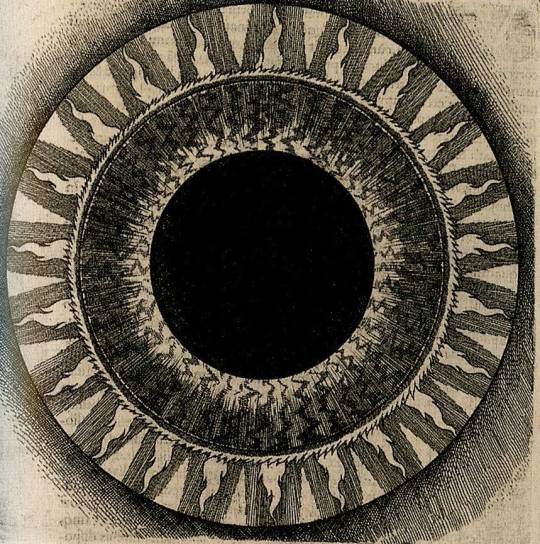


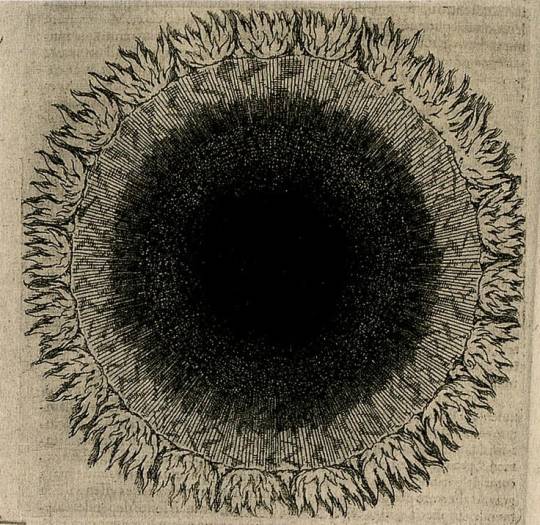
Robert Fludd (1554 - 1637), Utriusque Cosmi, 1619.
Robert Fludd, also known as Robertus de Fluctibus, was a prominent English Paracelsian physician with both scientific and occult interests. He is remembered as an astrologer, mathematician, cosmologist, Qabalist and Rosicrucian. Fludd is best known for his compilations in occult philosophy.
38 notes
·
View notes
Text

Back cover illustration: Paracelsian-era discussions often took place within a complex framework of symbols such as those shown here. Woodcut in Johann Daniel Mylius, Opus medico-chymicum ..., Vol. 1 (Francofurti, 1618-1620).
8 notes
·
View notes
Text
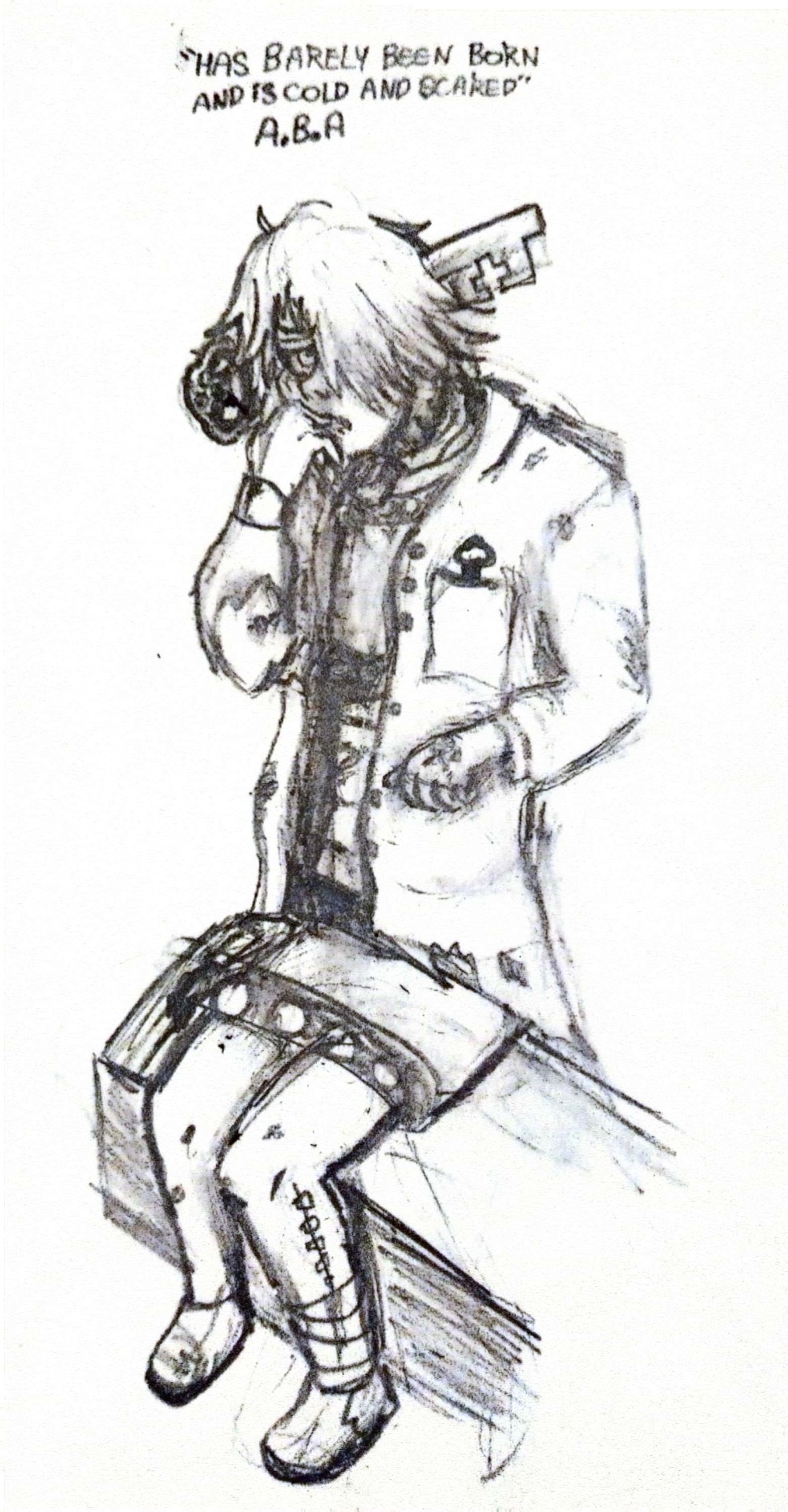
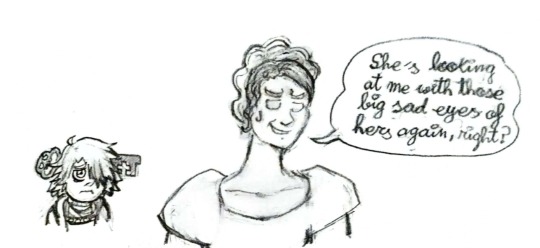
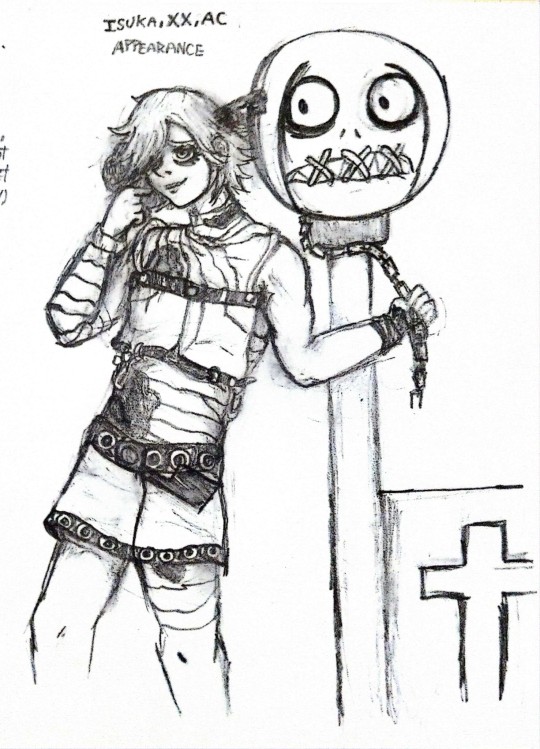
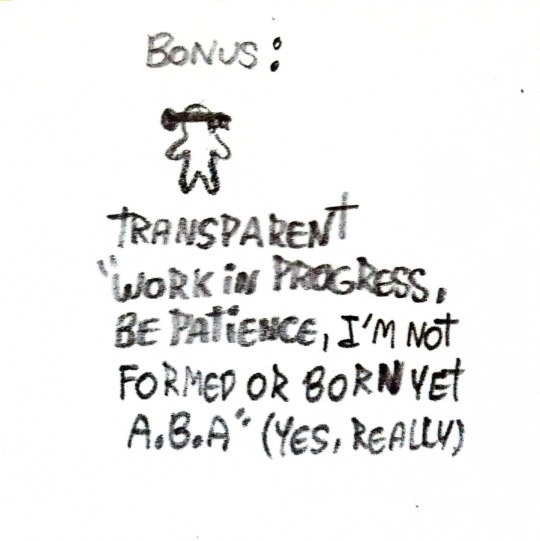
Here's what I've been working on for the last few days! And somehow I didn't catch til now that I wrote patience instead of patient...
I have been thinking quite a lot about my thoughts on "baby" A.B.A, as I have been seeing a bunch of other people's cool concepts for it. Let me explain the drawings in order and detail, under the cut for your convenience:
1.As we have officially seen, she didn't have a proper baby or child form, looking close enough to how she appeared in the classic games. Still, I imagine her stare is more innocent and somehow looks more tired, scared and disheveled than her current self. I have seen concepts of cool older A.B.As with labcoats, but felt an slightly oversized one was fitting for a barely newborn homunculus that is absolutely alone and confused :(. She grabbed it from somewhere in Frasco, possibly one of her creator's spare coats, but, it being found all torn up and a bit bloody isn't a good sign of whatever happened before she was born... Kept her official just awakened leg sutures, but added some more to drive home how she's a frail, just born frankenstein-esque creature. I hope the neck one is visible. Oh, also, her head key's a bit shinier and cleaner! Idk you, but when drawing this I just wanted to give her a big hug :(.
2. I mentioned Frasco's intriguing ghosts here. Were there before A.B.A was born? If so, coupled with her ability to see ghosts, one could think they at least were a sort of human(ish) interaction for her, but I love to suffer so my headcanon is that they have.. complicated feelings about her. TDLR they find her annoying weird cause... She's A.B.A, and while they're civil and might have shared some chats and moments, the ghosts can get kind of fed up and ignore her. Also they probably have their own deep ghostly business to attend. Sorry. Also, because again I love to suffer, Based on the ghosts wearing what seem like old-timey clothes, I headcanon that they can be mentally old-fashioned and, while NOT fully responsible for this (as again. A.B.A is A.B.A, she gets on troubles and obsessive warped up views of living on her own), their stuck mindset influenced A.B.A to (not that unlike Elphelt) think being a super duper good wife is an important goal and... Being SO into the idea that (her idea) of romantic love will be a panacea for her. Geez this went on and got sad. If it makes you feel better, I based off the little sad A.B.A on sad-looking seal pictures.
3. Eh, this is a short one, just me drawing classic A.B.A to compare it with how I draw my younger design. Slightly more confident, still as pathetic, of course. Even though Paracelsus' head came out much smaller than it should have (:/) I'm very proud of how this one drawing came out!
4. Lastly, as a bonus, my take on a barely formed, not yet born A.B.A. As I've mentioned sometimes, (real life alchemist) Paracelsian homunculi were transparent before they were fully formed, and I like the idea. She's just very small also. Don't ask me about the key, idk how that works, I just wanted to add an A.B.A design piece so it didn't look I just slapped an unrelated humanoid doodle in my post, haha.
#a.b.a#guilty gear#frasco ghosts#yep I'm tagging them#I hope you like it! I went beast mode on this one. hope you find the rambling interesting too#art tag2b named#edit: turns out I also had another grammatical fail in the ghost picture oghh
20 notes
·
View notes
Text
6 notes
·
View notes
Text
Allen G. Debus. The English Paracelsians. London: Oldbourne Book Co. Ltd, 1965. Hardcover. 222 pages.
Shop link in bio.
instagram
#alchemist#alchemists#alchemy#alchemical#paracelcus#early modern period#english history#history of science#esotericism#occult philosophy#history of medicine#chemistry#bookseller#booksellers#Instagram
2 notes
·
View notes